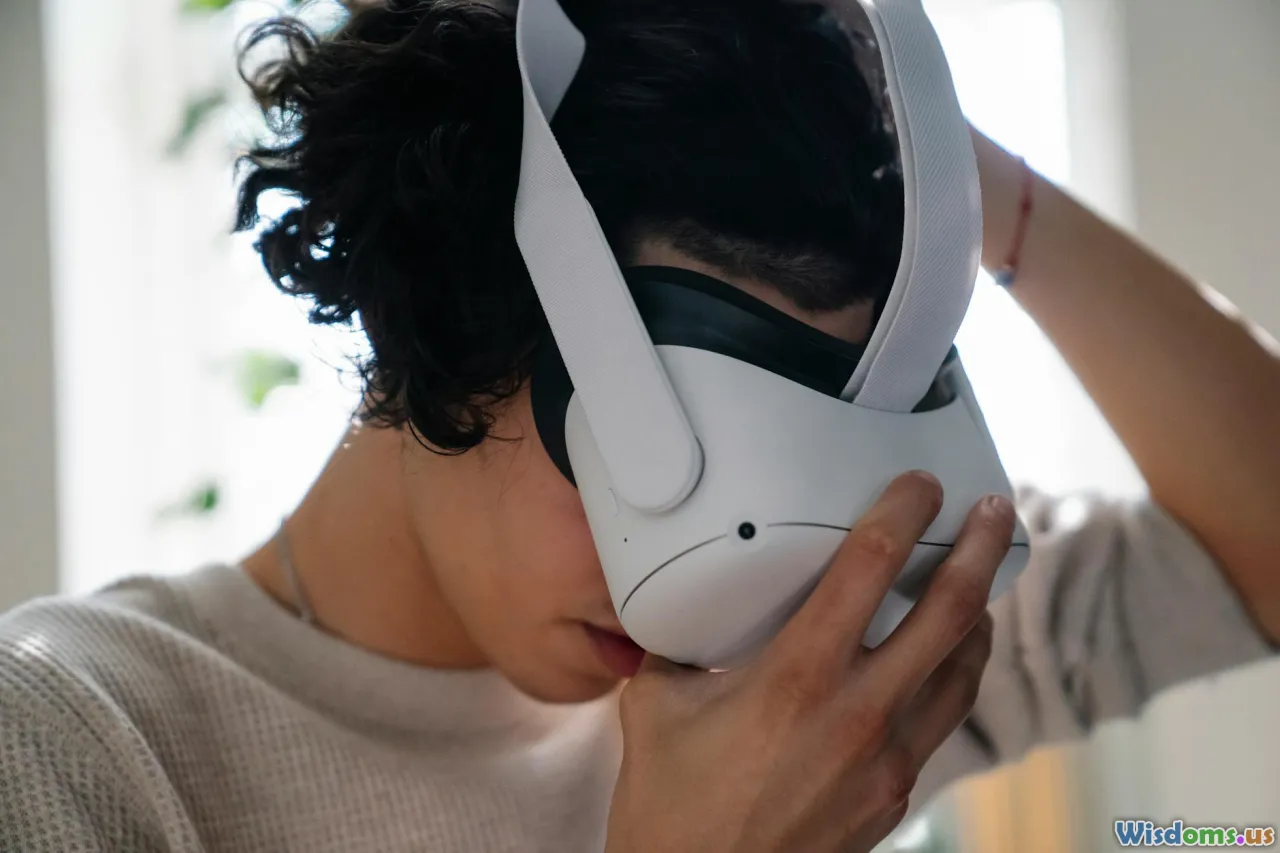
Virtual Reality: Sci Fi Dreams to Real Life
8 min read Explore how virtual reality evolved from sci-fi fantasy into today's immersive tech, reshaping entertainment, education, and beyond. (0 Reviews)
Virtual Reality: Sci-Fi Dreams to Real Life
Introduction
Imagine slipping on a headset and instantly being transported to another world—one where you can climb mountains on Mars, walk through ancient civilizations, or even interact with distant friends as if they were right beside you. This idea was once the stuff of science fiction, depicted in countless novels, films, and futuristic visions. Today, virtual reality (VR) has turned these sci-fi dreams into an accessible and impactful reality.
Virtual reality is no longer a distant fantasy but a rapidly growing technology that is reshaping entertainment, education, medicine, and more. In this article, we’ll journey through VR’s origins in science fiction, its technological breakthroughs, practical applications, current challenges, and its promising future.
The Sci-Fi Roots of Virtual Reality
Early Depictions and Imaginings
While VR as a term emerged in the late 20th century, the concept stretches back much further. Authors and creators imagined immersive alternate realities long before technology could achieve them.
-
Stanley G. Weinbaum's “Pygmalion's Spectacles” (1935): Considered one of the earliest fictional portrayals of VR, this story depicted goggles that provided a fully immersive sensory experience including sight, sound, and touch.
-
Philip K. Dick’s works: Often explored altered realities and simulated worlds, questioning what distinguishes real from artificial experience.
-
Movies like "The Matrix" (1999): Captured the imagination of millions by presenting a world indistinguishable from reality but entirely simulated.
Such depictions inspired researchers to move beyond imagination to innovation.
The Technological Leap: From Concept to Devices
Milestones in VR Development
-
1968: The Sensorama and Sword of Damocles: Morton Heilig’s Sensorama offered a multisensory experience combining visuals, sound, vibration, and even smell, while Ivan Sutherland developed the first head-mounted display linked to a computer.
-
1990s: Initial Consumer Attempts: Nintendo’s Virtual Boy and IBM’s early VR headsets aimed to bring VR to consumers, yet technological limits restricted their impact.
-
2010s: The VR Renaissance: The advent of powerful smartphones, improved graphics processing, and affordable sensors led to Oculus Rift’s Kickstarter in 2012, reigniting mainstream interest.
How Modern VR Works
At its core, modern VR systems use:
- Head-Mounted Displays (HMDs): Deliver high-definition visuals directly to the eyes, creating stereoscopic 3D effects.
- Motion Tracking: Sensors track head and body movements, adapting the scene in real-time.
- Controllers and Haptics: Devices replicate hand presence and tactile feedback.
These advancements enable users to feel “present” in a digital space—a phenomenon known as "presence".
Real-World Applications of Virtual Reality
Gaming and Entertainment
The most visible VR application is gaming. Titles like Beat Saber, Half-Life: Alyx, and VRChat provide immersive, interactive experiences that blur the line between player and game world.
-
As of 2023, the VR gaming market expanded significantly, with estimates forecasting revenues hitting $4.5 billion by 2025 according to market research firm Statista.
-
Cinematic storytelling is also adapting. VR films and 360-degree videos immerse viewers in narrative environments, offering new ways to engage audiences.
Education and Training
VR’s ability to simulate unsafe or impractical environments makes it invaluable for education.
- Medical Training: VR platforms like Osso VR and FundamentalVR allow surgeons to practice complex procedures in a no-risk setting.
- Flight Simulators: Pilots have utilized VR training for decades, with modern iterations providing highly realistic flight experiences enhancing skills and safety.
- Historical Reconstructions: Students can explore ancient cities or witness historical events, gaining deeper understanding than textbooks offer.
Healthcare and Therapy
Beyond training, VR is revolutionizing patient care:
- Pain management: VR distraction therapies during painful procedures reduce discomfort, as found in studies by The Journal of Pain Research.
- Mental Health: Exposure therapy for phobias and PTSD using VR shows promising results, allowing safe, graded exposure in controlled settings.
Industry and Remote Work
- Industries such as architecture and automotive design use VR to prototype and visualize projects in 3D before construction or manufacturing commences.
- With the rise of remote collaboration, VR platforms like Spatial and Horizon Workrooms enable teams to meet in virtual spaces, fostering creativity and interaction more naturally than video conferencing.
Current Challenges in Virtual Reality
Despite tremendous progress, VR faces hurdles:
- Cost and Accessibility: While prices have dropped, high-end VR setups remain expensive for many consumers.
- Motion Sickness: Some users experience simulation sickness due to latency issues or mismatched sensory input.
- Content Saturation: Quality VR content is growing but still limited relative to traditional media.
- Hardware Limitations: Bulky equipment and limited battery life restrict prolonged use.
The Future of Virtual Reality: Sci-Fi or Science Fact?
Researchers and companies are pushing VR toward even more realistic, seamless experiences.
- Brain-Computer Interfaces (BCI): Elon Musk’s Neuralink and others seek to directly link brain activity with VR, potentially eliminating external devices.
- Haptic Suits and Sensory Expansion: Full-body suits with tactile feedback promise whole-body immersion.
- Augmented Reality (AR) Integration: Combining VR with AR can create mixed realities, blending digital and physical worlds.
VR may redefine social interaction, work, creativity, and even consciousness itself. With predicted market growth projected by Grand View Research to surpass $60 billion by 2030, its impact is only beginning.
Conclusion
What was once confined to the pages of sci-fi novels or the frames of cult classic movies has today evolved into a tangible force reshaping how we play, learn, heal, and connect. Virtual reality stands as a beacon of human ingenuity, turning dreams into experience and fantasy into fact. While challenges remain, the speed and scale of VR's evolution signal a future where immersive digital worlds are as commonplace as smartphones, forever altering our perception of reality.
As VR continues to mature, one truth remains clear: the line between science fiction and science fact will blur like never before. The future is immersive. Are you ready to step in?
Rate the Post
User Reviews
Popular Posts





















